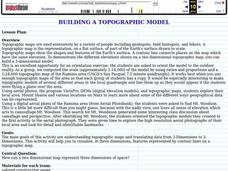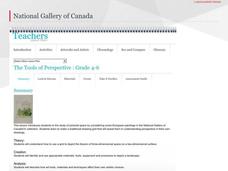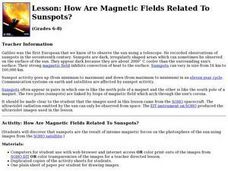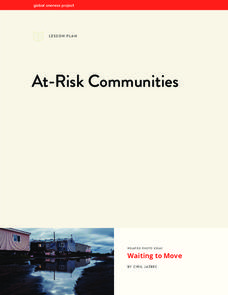Curated OER
Building a Topographic Model
Young scholars explore Mount Shasta and various locations on Mars to examine ways geographical data can be represented. They study topographic maps and translating data from 2-Dimensions to 3-Dimensions.
National Gallery of Canada
The Tools of Perspective
Make a study of perspective in the real world. Learners examine and discuss works of art that show examples of perspective before trying their own hands at it. Using a grid drawn on transparent paper, class members transfer a view from a...
Teach Engineering
Balsa Glider Competition
Change one variable and try again. Teams build basic balsa gliders and collect data on their flight distances and times. Through collaboration, the team decides on two modifications to make to the basic design and collect data for the...
Curated OER
Book: Germany
Students, after reading Chapter One in the book, "Germany," analyze and recreate the political boundaries as well as the physical features of the nation of Germany with the assistance of play-doh or salt dough. In groups, they create...
Teach Engineering
A New Angle on PV Efficiency
Let me get an angle on this! Investigate the orientation of a photovoltaic panel and its effect on efficiency. By using a light source, learners collect and plot current output to determine the ultimate orientation. The resource includes...
Teach Engineering
Designing a Spectroscopy Mission
In this mind-bending activity, young engineers explore this question of whether or not light actually bends. Using holographic diffraction gratings, groups design and build a spectrograph. The groups then move on research a problem...
Art Institute of Chicago
Color Combinations
Explore color through an examination of pointillism and light. Class members view Georges Seraut's famous painting on a computer, zooming in and out to see the details and effects of the technique. They then cover how light and color are...
Curated OER
Nebraska's Geology, Soils, Groundwater Regions, and Topographic Regions
Students examine the distribution of geology, soils, groundwater, topography, and geography in Nebraska. They identify various regions and characteristics on a map, and develop a plan to manage the soil and groundwater resources of the...
Curated OER
Muffin Mining
Pupils participate in demonstrations of the problems of mining. They use blueberry muffins to represent their coal deposits.. They make predictions and record their observations. They discuss their results.
Curated OER
How Are Magnetic Fields Related To Sunspots?
Middle schoolers discover that sunspots are the result of intense magnetic forces on the photosphere of the sun by observing images from the SOHO satellite.
Curated OER
Journey to Gettysburg
Students use latitude and longitude to map the path of the Battle of Gettysburg.
Curated OER
Architectural Letters
Have your class construct their own architectural letter. This art project focuses on architecture, or the art of building. You can connect this activity to a biography activity. Your class can decorate their initial to reflect their...
Curated OER
Bling Bling Metallic Mosaics
Using different types of paper and paint, young artists will create a beautiful mosaic. This is a great variation from the traditional tile and grout mosaics. Use this beautiful art project to discuss different art mediums,...
Perkins School for the Blind
Beanbag Toss
Why is learning how to catch and toss so important? If one has visual impairments, learning this basic skill will help him increase orientation and mobility, coordination, and cognitive development,. Mastery of this skill will also mean...
Dick Blick Art Materials
Glue Paint Symmetry Prints
Add watercolors to white glue, paint onto clear film paper, fold, open, and voila, a butterfly! This art project, designed for special education classes, but perfect for any classroom, is sure to engage your young artists.
Global Oneness Project
At-Risk Communities
"Waiting to Move," a photo essay by Ciril Jazbec, brings into sharp focus the threats posed by climate change. Class members examine images of Shishmaref Island and the Native Alaskan Inupiate coastal villages that are impacted by rising...
Global Oneness Project
Rethinking the Fabrics We Wear
What are fibersheds and what what do they have to do with environmental protections? A photo essay and audio recordings about Mimi Luebbermann, and her sheep, cause consumers to reflect on how their clothing choices can support local...
Curated OER
Ready, Set, Grow
Create a class butterfly garden, then write journal entries with illustrations of the garden.
Curated OER
2 x 2
Students work together to grid a 2 x 2 meter unit using the formula for the Pythagorean Theorem. After creating the grid, they identify the location of artifacts and create a map of their location. They develop a graph and table of their...
Curated OER
Handbuilding With Joan
Students discover the three basic handbuilding techniques used in beginning pottery: pinch pot, coiling, and slab work. After a lecture/demo, students try their hands at making pottery using the three different techniques.
Curated OER
Physical Location; How a Border Town Might Develop
Students speculate how a location can develop into a large town. They investigate the physical resources and how populations can grow. There are guiding questions to help students through the research and class discussion. Students make...
Curated OER
Water, Water Everywhere
Students are introduced to the complex issues of water resources around the globe. In groups, they take on the role of a country and map out the location of water sources. They barter, sell or take over other groups to have access to...
Curated OER
Creating Space
Students use simple lines and shapes to draw objects, figures, or animals.They explore the process of printmaking and making multiples, use repetition of simple shapes to create complex images, and inquire about a contemporary artist's...
Curated OER
Independent - To Be or Not Top Be: Press Conference
Fourth graders deliver an oral presentation on the American war for independence to small groups. They use a rubric to give each other peer feedback on the strengths and weaknesses of their presentation.

























